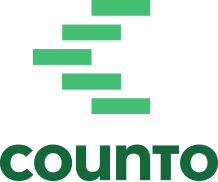How SMEs Can Address the Women’s Skills Gap and Build Inclusive Growth
Singapore’s workforce is increasingly diverse, but equity in skills and access to growth opportunities hasn’t kept pace, especially for women in SMEs. The gap is particularly noticeable in leadership roles, digital fluency, and technical skill sets.
For SMEs, this isn’t just a social issue — it’s a business growth challenge that also touches your payroll, accounting services, and compliance responsibilities. If your team lacks balance in skills and representation, your operations, innovation, and competitiveness can suffer.
Here’s how small businesses in Singapore can start addressing the women’s skills gap and foster a more inclusive, future-ready workforce.
What Is the Women’s Skills Gap?
The women’s skills gap refers to the difference between the skills women currently have access to and the skills needed for higher-growth roles, such as:
- Leadership and strategic planning
- Finance, budgeting, and decision-making
- Data, analytics, and digital tools
- Project management and automation
- Business development
This isn’t always about capability — it’s often about access, opportunity, and visibility. Many women in smaller companies may be stuck in support roles with fewer chances to upskill, especially after career breaks or in part-time roles.
Why This Matters to SMEs
For smaller teams, growth depends on each person’s contribution. If half the team isn’t progressing, you’re limiting the business.
Here’s what’s at stake:
- Reduced productivity: Skills mismatches create inefficiencies
- Talent loss: Women may leave if they feel stuck or undervalued
- Missed leadership potential: Underdeveloped talent can’t step into senior roles
- Regulatory risk: Singapore’s Workplace Fairness Legislation (2025) now expects employers to provide fair access to training and progression
✅Payroll giving you headaches? From calculations to tax deposits, our in-house team handles everything. See how we simplify payroll here.
How SMEs Can Address the Gap (Practically)
1. Start with a Skills Audit
Take stock of your current workforce. Where do men and women sit across:
- Role types (technical vs admin)
- Access to training
- Promotions or salary bands
Use this to identify where gaps are most visible — not just in seniority, but in skill development paths.
2. Embed Upskilling into Daily Roles
Don’t reserve learning opportunities for senior staff. Make it part of every role by:
- Including budget/time for microlearning (e.g. Excel, data tools, digital finance apps)
- Encouraging mentoring between team members
- Linking performance reviews to skill development goals
This levels the playing field and supports all team members — regardless of role or gender.
3. Offer Flexible Access to Learning
If you have part-time or returning female employees, make sure training is:
- Modular and self-paced
- Available in short formats (e.g. 30-minute webinars)
- Scheduled with flexibility
Accessibility matters more than budget. The goal is to include, not overwhelm.
4. Track Training, Not Just Task Completion
Performance shouldn’t only be based on deliverables. Add skill-building to your appraisal structure — and reward growth, not just output.
You can integrate this with:
- Payroll systems (e.g. recognising training hours)
- CPF top-ups for training-linked bonuses
- Internal recognition (team sessions or goal tracking)
5. Review Your Promotion Pathways
Are leadership roles filled through informal selection or clear criteria?
If it’s informal, chances are unconscious bias is playing a role. Introduce:
- Structured promotion criteria
- Transparent application processes
- Growth tracks that highlight skill-building (not just years of service)
This gives women — and all employees — a fair, visible path to move up.
Summary
Addressing the women’s skills gap isn’t a side project — it’s core to how SMEs grow. When women are equipped with the right tools, training, and clarity, your business benefits from a more engaged, loyal, and future-ready workforce.
The best part? You don’t need a big budget or formal HR department. Start small:
- Audit where the gaps are
- Offer accessible learning
- Track progress through your payroll and performance systems
Growth follows inclusion. And inclusion starts with opportunity.
Complete Payroll Management Service
Don’t let payroll complexity slow you down. Our team handles everything—from employee payments to tax deposits and filings. We manage compliance deadlines, calculate withholdings, and ensure timely payments. Plus, your payroll seamlessly syncs with your books.
Unlike firms that outsource to third-party providers, we handle your payroll in-house. Get expert support and direct access to your Customer Success Manager via SMS for any questions.
Ready to get started? Chat with us now, email [email protected], or use our contact form.
Here are some articles you might find helpful:
How to Build an FWA Policy for SMEs in Singapore
Tripartite 2025 Guidelines for Flexible Work Requests in Singapore
Singapore’s Paternity Leave: What Employers and SMEs Need to Know







